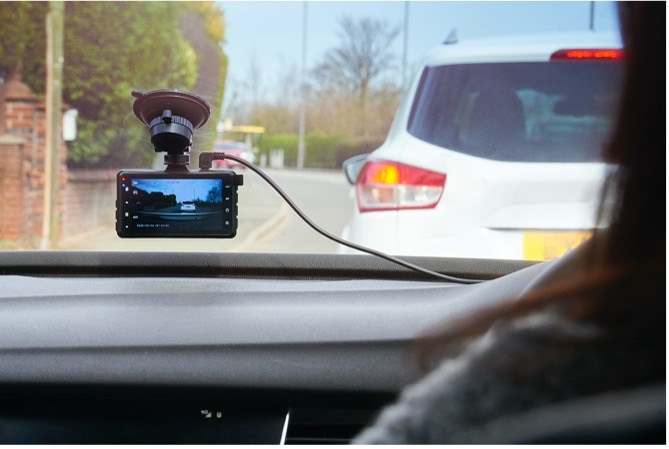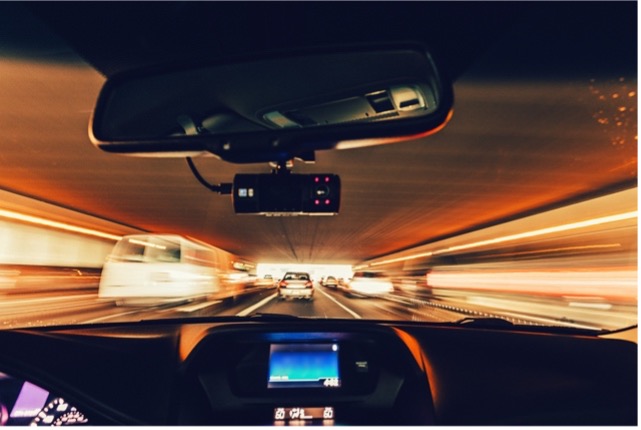Dashboard cameras, or dash cams, are beginning to be seen around the world in increasing numbers and for numerous applications. In the public sector, they have become nearly ubiquitous in police vehicles, busses, ambulances and so on. Commercially, they are found in taxis, delivery vans, corporate fleets, over-the-road semi-trucks and driving instructor vehicles. They are even being installed by regular consumer drivers for some very practical and useful reasons.
Real-Time Video

The function of a basic dash cam is simple: A user mounts a camera on the dashboard in the vehicle and it records video while they drive around. More advanced dash cams also record sound, GPS logging, accelerometers and speed. The most common type of camera is called a single channel camera, that simply records what is happening in front of the vehicle. Dual and multi-channel cameras take it a step further by adding more camera lenses to the unit so they can record what is also happening within the vehicle—including the driver and passengers.
According to Credence Research, single channel dash cams currently have the largest revenue share, but demand for dual-channel dash cams is expected to see the fastest growth over the next few years among both commercial and private vehicle owners. This trend is exemplified by parents in Europe who are installing dual-channel cameras in their cars to capture the behavior of their teenage drivers.
Keeping an eye on the bad (or good!) behavior of kids behind the wheel is only the tip of the iceberg for why people are installing dash cams. Insurance.com offers several other compelling reasons including:
- Have a record of your accident. Witness accounts can vary. Video proof is hard to refute and dash cam footage can expedite an insurance claim.
- Get out of a ticket. Using video to show an officer of no wrongdoing or beating a ticket in court with video proof will keep you from a nasty auto insurance surcharge.
- Help fight insurance fraud. The FBI estimates that the cost of insurance fraud is more than $40 billion per year. Catching an individual staging an accident can help lower insurance rates for everyone.
- Make you a better driver. Reviewing how you—or family, employees, etc.—drive can help highlight ways to correct driving mistakes, such as braking too hard or switching lanes abruptly.
- Keep an eye on your unattended vehicle. Many dash cams have motion detection capabilities that turns on the camera if there is movement. If the vehicle is broken into or someone hits it while parked, you may be able to review the dash cam footage and find the individual responsible.
Beyond security, safety and legal reasons, dash cams can be a source of nostalgia, humor and astonishment. You can record family road trips, upload crazy drivers or other odd human behavior you encountered on the road, and revisit these memories later. For instance, in Russia, the Chelyabinsk meteor was spectacularly captured on several dash cams.
microSD, the Dash Cam Memory Standard
Dashcameras.net confirms that microSD cards are essentially the industry standard memory option for dash cams stating, “Most of the dash cam units have a microSD card slot.”
Not only do microSD cards deliver large capacities for storing video files, their small form factor enables manufactures to follow the trend of bringing cameras that are more compact to market. Additionally, the removable nature of microSD cards makes it possible to take the card out and put it into a smart phone or other mobile device to view and share the video.
Capacity and Speed

As the resolution the camera records at goes up from 720p to 1080p to 2K to 4K and even 8K, the image quality increases, and the higher resolution means a lot more detail can be captured compared to a lower resolution camera. More pixels allow for a wider image and more detailed recording with less “noise” and artifacts when zooming in. Higher resolution cameras can more readily capture items such as license plates or street signs, which can be critical in an insurance or traffic violation situation.
Recording video requires a constant minimum write speed to avoid frame drop during recording for smooth playback. The SD Association defined various Speed Class standards assuring minimum continuous write speed to answer a demand for advanced video quality recording:
- Speed Class: C10 is used in High Speed mode or faster assuring minimum write speed of 10MB/s
- UHS (ultra High Speed) Speed Class: U1 and U3 are used in SDR50/DDR50 or faster assuring minimum write speed of 10MB/s and 30MB/s, respectively
- Video Speed Class: V60 and V90 are used in UHS-II mode or faster assuring minimum write speed of 60MB/s and 90MB/s, respectively. Video Speed Class is defined to answer a demand for high resolution and high quality 2K, 4K and 8K video recording and it also has an important feature to support next generation flash memory such as 3D NAND.
BlackboxMyCar.com estimates that on average, dual-channel dash cams write 16GB/hour and single-channel dash cams write 8GB/hour. They inform visitors to their site that having a reliable, fast, and durable microSD card can help ensure they are always protected. As such, for dash cams, they recommend high capacity microSD cards that are Class 10 with MLC technology, which essentially means they will have adequate download and upload speeds and durability. Class 10 records 10 megabytes per second at 720p-1080p (also called FHD or Full-HD Resolution) video quality.
Dash cameras (as well as surveillance cameras) perform overwrite recording after the card is full. Any memory card has a limited endurance capability. Endurance is the number of times that a memory card may be re-written. Therefore, the life of cards is limited by nature. The total lifetime of cards is dependent on two main factors. First, the total card capacity because if the capacity is large, it allows longer recording time with less re-writing. Second, the cards use of higher endurance memories provides greater longevity. These cards are marked to have higher endurance capability and are offered by well-known brands including Western Digital’s Purple line, Kingston’s Endurance line, Samsung Pro Endurance line, to name a few. An error message during reading or writing the card is usually indicated on the dash cam and the cam user should replace the card when such message appears. Also, it is recommended to periodically replace the SD memory card every one or two years with a new one, depending on its endurance.
As cameras increase in quality and approach 4K (otherwise known as Ultra High Definition or UHD), it will become increasingly necessary for dash cam manufacturers to leverage the microSD Express format, which relies on the far faster PCIe® and NVMe™ interfaces that reach speeds of up to 985 megabytes per second.
Amount of Video
The amount of video a dashcam can hold all depends on the size of the memory card and the bit rate of the camera. The bit rate is the amount of footage that a camera can record per second. The bit rate is measured in megabits per second with the average camera having a bit rate of 15 to 30 megabits per second.
EducatedDriver.org provides a formula to calculate how much video is recorded before it is overwritten/deleted. Take the size of the memory card, for example 128 GB, then times that by 8 as there are 8 bits in 1 byte in a gigabyte. Finally, divide it by the 20 megabits per second-bit rate (of the current camera setting in this example) to get how many minutes the dashcam is able to record.
Here’s an example of that calculation: (128,000,000,000 x 8 bits) / 20,000,000 bits per second = 51,200 seconds. Next, divide into minutes: 51,200 / 60 = 853.3 minutes. Now, divide the minutes again by 60 to get the hours. So 853.3 / 60 = 14.2 hours.
Back Up
Car Cam Central recommends having more than one card on hand in case you get into an accident. You’ll be able to swap cards out and keep recording without worrying about overwriting important footage. It is recommended to also back up the dashcam’s power with a rechargeable battery or a super capacitor embedded in dash cam to avoid power loss in an accident.
When purchasing an SD memory card for dash cam, be sure to check the maximum capacity. Many dash cams in the market today limit the card capacity up to 32GB because of the file system is limited with FAT32.
Dashboard cameras are increasingly becoming more popular with drivers around the world. This technology will only increase in quality, speed and acceptance as it continues to find adoption by a growing number of consumer and professional vehicle drivers alike.
Hiroyuki Sakamoto is president of the SD Association. He can be reached at:
SD logos and trademarks are owned and licensed by SD-3C LLC.
PCI Express® and PCIe® registered trademarks of PCI-SIG®.
NVM Express™ and NVMe™ are trademarks of NVM Express, Inc.
© 2021 SD Association. All Rights Reserved.




